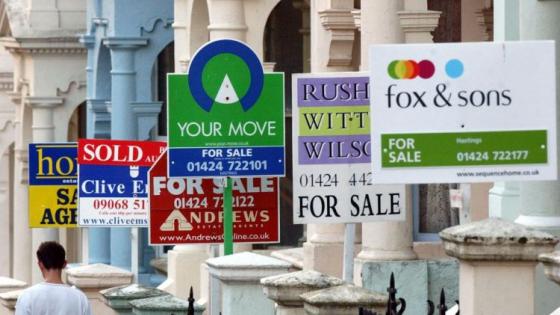A typical real estate agent charges 6% of the sales price in the US, between 2% and 3% in the UK, and about 2% in the Netherlands. In the US, $61 billion was spent on real estate transaction fees in 2004 (White 2007). In principle, if estate agents make matching of sellers and buyers easier and improve the quality of those matches, they create a surplus that might justify high fees. However, in a recent study we find that expensive brokers performed worse than a new group of cheaper brokers who charged a flat fee (Gautier et al. 2017). On this evidence, rents in this sector are large.
Since 2001, all of the houses for sale in the Netherlands are listed on a public web site called Funda. Originally, only traditional full-service brokers posted houses on this website. They charged a fee of around 2%. This would be paid after the transaction, which at that time averaged almost €200,000, completed.
In 2005, flat-fee brokers entered the market. They charged an up-front fee, but they offered the same online listing as the traditional brokers and they negotiated the sale in the same way. The main difference between them and traditional brokers was that flat-fee brokers left sellers to conduct the viewings of the house.
Flat-fee brokers sell faster, and at a higher price
Between 1985 and 2011, we find that sellers who used a flat-fee broker received on average a 2.7% higher price, and sold about 21 days faster than traditional brokers. The average sales time was 115 days. This differs from Levitt and Syverson (2008), who had found that longer sales times were associated with a higher price.
The effect remains strong for homeowners who switched from a flat-fee to a traditional broker, which ruled out simple explanations – for example, that owners of high-quality houses used flat-fee brokers. In our analysis, we control for house fixed effects and for time-varying house-specific effects, such as the time between two sales, buyer and seller characteristics. We also use an apartment-specific surface measure, because apartments lack some characteristics that houses have (a garden, for example). Since the quality of the neighbourhood might have changed over time, we use 22 regional dummy variables to control for this (10 for the largest cities, and 12 for the provinces in the Netherlands). We also control for seasonality by including dummy variables for different quarters.
Robustness checks
We interact fee type with neighbourhood density and an apartment dummy, and find that, for all sub-classes, flat-fee brokers sold at higher prices.
Traditional brokers might have been more effective at shifting difficult-to-sell houses. Even when we consider only houses with time-to-sale above the median, we continue to find that houses sold by flat-fee brokers got a better price.
Our results are not driven by houses that failed to find a buyer.
Sophisticated sellers may be more likely to sell using a cheaper flat-fee real-estate agent. We expect that this selection effect would be largest in the earliest years of the introduction of flat-fee real-estate agents, since the most sophisticated sellers would also be the ones who were most likely to be early adopters. The number of sales made with flat-fee estate agents has also been increasing over time, which immediately implies a decrease in the selectivity of the sophisticated sellers. This hypothesis implies that we should expect a declining impact for flat-fee brokers since their introduction in 2005. We test this by interacting the flat-fee dummy with a dummy that selects years before 2008, and do not find stronger effects in early years. This suggests that our results are not driven by early adopters.
Finally, we look at unobserved seller sophistication. This could be correlated with both broker choice and sales performance. We find that sellers who used a flat-fee broker were a lot better off than if they had used a traditional broker. We are not able to draw strong conclusions for sellers who chose a traditional broker, because there are too few sellers with similar characteristics who used them.
A comparison with the US
Our findings are consistent with US results in Hendel et al. (2009), who looked at the difference in price and time on the market between realtors and a ‘for sale by owner’ website in Madison and found that houses offered on the latter platform sold at a higher price. Our study has the advantage that all transactions took place on the same platform. We are able to single out the impact of the additional services provided by traditional estate agents, rather than a combination of services and quality of the platform.
Bernheim and Meer (2013) also presented evidence that houses on the Stanford University campus sold directly by the owner fetched a higher price.
We find that cheaper flat-free brokers sell houses faster, and at a higher price. This suggests that the profits of traditional brokers are at least partly driven by rents, rather than performance.
References
Bernheim, B D and J Meer (2013), “Do real estate brokers add value when listing services are unbundled?", Economic Inquiry 51: 1166-82.
Gautier P A, A Siegmann and A van Vuuren (2018), "Real-Estate Agent Commission Structure and Sales Performance", CEPR Discussion Paper 12587.
Hendel, I, A Nevo and F Ortalo-Magne (2009), “The relative performance of real estate marketing platforms: MLS versus FSBO", American Economic Review 99: 1878-98.
Levitt, S and C Syverson (2008), "Market distortions when agents are better informed: The value of information in real estate transactions", Review of Economics and Statistics 90: 599-611.
White, L J (2006), “The residential real estate brokerage industry: What would more vigorous competition look like?", NYU working paper.






